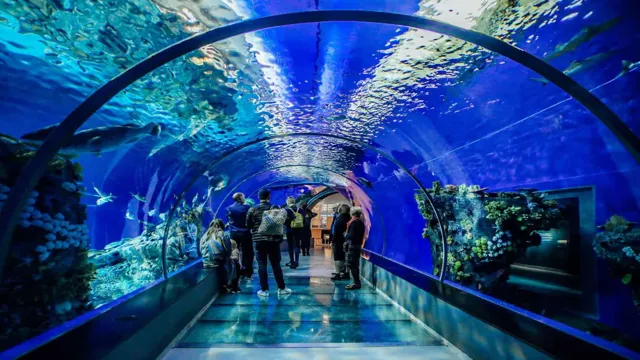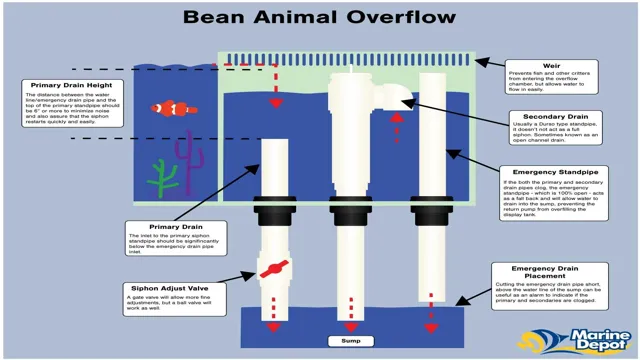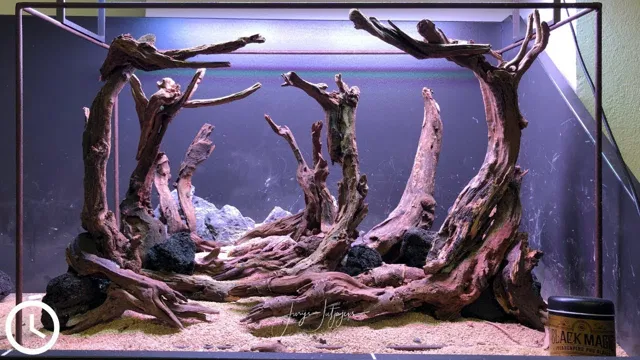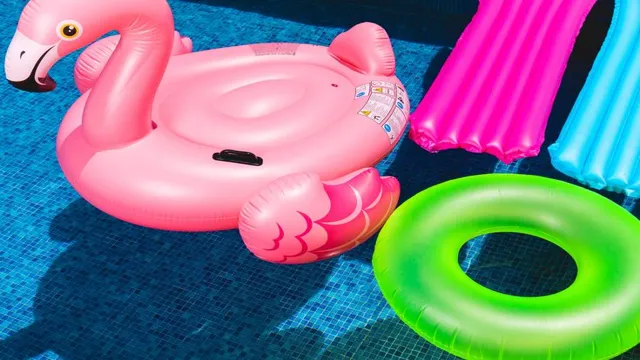If you’re an animal lover or have kids who are fascinated with the natural world, you might be considering keeping tadpoles as pets. Tadpoles are the larval stage of frogs and toads, and watching them transform as they grow and change is a fascinating and educational experience. Keeping tadpoles in an aquarium is a great way to observe these creatures up close and learn more about their behavior and biology.
But before you dive in, there are a few things you need to know to ensure your tadpoles stay healthy and happy in their new home. In this blog, we’ll explore the basics of keeping tadpoles in an aquarium, from selecting the right tank to feeding and caring for your new pets. So whether you’re a seasoned aquarium hobbyist or a newcomer to the world of pet care, read on to discover everything you need to know about keeping tadpoles in an aquarium.
Choosing the Right Aquarium
If you’re planning to keep tadpoles in an aquarium, it’s important to choose the right aquarium for them to thrive. A glass aquarium with a capacity of at least 10 gallons is recommended as it provides ample space for water circulation, which is crucial for tadpoles as they need plenty of oxygen to survive. The aquarium should also have a lid to prevent the tadpoles from jumping out and to keep other pets from accessing them.
Furthermore, it’s important to choose an aquarium that has a good filtration system in place as tadpoles require clean water to grow and develop. It’s also recommended to add a heater to the aquarium to maintain a consistent water temperature, which is important for tadpole growth and development. Lastly, when setting up an aquarium for tadpoles, it’s important to use appropriate water conditioner and bacteria supplements to ensure a healthy environment for the tadpoles to thrive.
Overall, choosing the right aquarium is key to keep your tadpoles happy and healthy.
Size and Shape
When it comes to setting up an aquarium, choosing the right size and shape is crucial for the well-being of the fish and the overall aesthetic of the tank. The size of your aquarium should be determined by a few factors, including the number and size of the fish you plan to keep, the type of filtration system you plan to use, and the space you have available for the tank. A larger tank can provide more space for fish to swim and play, while also allowing for a more stable water environment.
When it comes to shape, there are many options available, including rectangular, round, and hexagonal tanks. Each shape can provide different viewing angles and opportunities for aquascaping, so it’s important to consider your personal preferences and the needs of your fish when choosing the right shape for your aquarium. Ultimately, no matter what size or shape you choose, the most important thing is to maintain a healthy and happy environment for your aquatic pets.
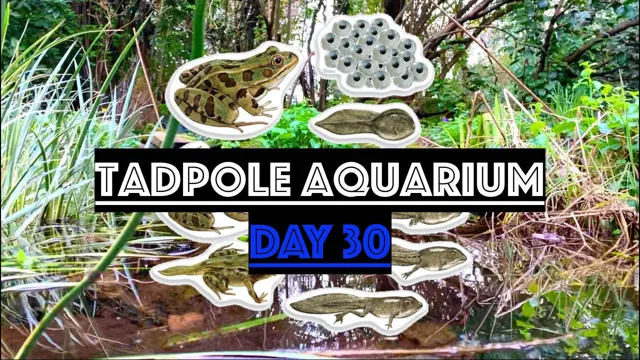
Water Filtration and Chemical Balance
When it comes to setting up an aquarium, choosing the right one is essential for both the fish and the tank’s ecosystem. You need to pick a tank size that is suitable for the type and number of fish you want to keep and make sure it has the appropriate water filtration system. The keyword “water filtration” cannot be stressed enough as it plays a crucial role in maintaining the aquarium’s chemical balance.
The filtration system is responsible for removing impurities and toxins from the water, providing a healthy habitat for the fish. Additionally, as the fish excrete waste, the filtration system reduces the amount of ammonia and nitrite in the water, helping to keep the environment safe for your aquatic pets. Therefore, when choosing the right aquarium, consider investing in a quality filtration system that can provide adequate water circulation, chemical balance, and oxygenation for your fish.
Preparing the Aquarium
If you’re thinking of keeping tadpoles in an aquarium, there are a few things you need to prepare in advance. First, choose an aquarium that’s big enough for your tadpoles to swim around comfortably. The size of the aquarium depends on how many tadpoles you plan to keep.
Next, create a comfortable living environment for your tadpoles by filling the aquarium with freshwater and adding a filter for circulation and water quality. You’ll also need a heater to maintain the water temperature at a consistent level. Provide hiding places for your tadpoles by adding rocks or plants to the aquarium.
Finally, let the aquarium cycle for a few days before adding your tadpoles to ensure that the water levels are stable and suitable for their health. With this preparation, your tadpoles will have a comfortable and healthy home in your aquarium.
Cleaning and Sterilizing
Preparing the aquarium for your fish can be an exciting task, but it’s important to ensure that the environment is clean and safe for your aquatic pets. Before adding any water or decorations, it’s critical to give the tank a thorough cleaning and sterilization. This process removes any harmful bacteria or chemicals that could harm your fish.
Start by wiping down the tank with a clean cloth and then rinse it with warm water. Next, use a mild cleaning solution and a specially designed aquarium scrubber to clean the glass and decorations inside the tank. Make sure to rinse everything thoroughly before adding water. (See Also: How to Kill Aquarium Pond Snails: The Ultimate Guide for Getting Rid of These Pestering Creatures)
To sterilize the tank, use a solution of bleach and water. Then, wait for 24 hours before rinsing everything again and allowing the tank to air-dry. Preparing an aquarium may seem daunting at first, but taking the time to clean and sterilize your tank will ensure a healthy environment for your fish to thrive.
Adding Water and Substrates
Preparing the aquarium is an important step in creating a healthy and thriving environment for your aquatic pets. Adding water and substrates are two crucial aspects of this process. When adding water, it is important to use dechlorinated water that has been treated with a water conditioner to remove any harmful elements.
It is also essential to ensure that the temperature of the water matches the needs of your aquarium inhabitants. When adding substrates, such as gravel or sand, it is important to rinse them thoroughly beforehand to remove any debris or dust. While adding water and substrates may seem like simple tasks, taking the time to ensure they are done properly can make all the difference in creating a healthy environment for your aquatic pets.
Feeding Tadpoles
Feeding tadpoles in an aquarium is an important task to ensure their healthy growth and development. To provide proper nutrition, it is recommended to feed them small amounts of food several times a day. One option is to use specially formulated tadpole food, which can be found at pet stores.
Another option is to feed them crushed flakes or small pieces of vegetables such as spinach or lettuce. It is important to avoid overfeeding as this can lead to excess waste and poor water quality in the aquarium. Additionally, ensuring the tadpoles have access to clean, dechlorinated water is crucial for their survival.
Keeping the aquarium clean and maintaining proper water conditions will promote the health and success of your tadpoles.
Types of Food
Feeding tadpoles can be tricky, as they require specific types of food for their growth and development. In the early stages, tadpoles feed on algae and small microorganisms, but as they grow, their diet changes. It’s essential to provide them with a varied diet and ensure they have access to plant matter and protein sources.
Some common options for protein include boiled egg yolks, non-medicated fish food, and chopped-up earthworms. You can also add boiled spinach or lettuce to their tank to give them much-needed plant matter. It’s important to avoid overfeeding them and remove any excess food as it can lead to water contamination.
Keeping track of their diet and keeping their environment clean and healthy is crucial for the survival of these tiny creatures.
Feeding Schedule
Feeding tadpoles can be an exciting experience, but it’s essential to know the correct feeding schedule to ensure happy and healthy tadpoles. Generally, tadpoles require to be fed every day or every other day, but the frequency may vary depending on their developmental stage and species. It’s crucial to keep an eye on how much they eat to prevent overfeeding, which can lead to dirty water and unhealthy tadpoles.
Tadpoles are herbivores, and their diet primarily consists of algae, plant matter, and vegetable-based fish flakes. However, if you notice that the tadpoles are not thriving or are not growing enough, incorporating high-protein food like bloodworms can help with their growth. As the tadpoles develop, their diet will change, and it’s crucial to adjust their feeding schedule accordingly.
Remember, a healthy diet is essential for the tadpoles’ growth and development into adult frogs.
Maintaining the Aquarium
To keep tadpoles in an aquarium, it is important to maintain a clean and healthy environment. You should change the water at least once a week, and clean the tank thoroughly every month. To clean the tank, remove all decorations and rinse them thoroughly with hot water. (See Also: How to Catch Aquarium Fish Without a Net: Tips and Tricks for Successful Fish Retrieval)
You can then clean the tank with a non-toxic cleaner, making sure to rinse it thoroughly before adding fresh water. When feeding the tadpoles, be sure to provide them with a variety of foods. This can include boiled lettuce, fish flakes, and live mealworms.
It is also important to monitor the temperature of the water, as tadpoles thrive in slightly warmer water. By following these simple steps, you can ensure that your tadpoles are healthy and happy in their aquarium home.
Water Quality Testing
Maintaining an aquarium can be a very rewarding hobby, but it’s also important to make sure that the water quality is suitable for your aquatic pets to thrive in. Testing the water on a regular basis is crucial to ensure that it stays within the optimal range for your fish, turtles, or other aquatic creatures. Doing so will not only help prevent health issues but also reduce the chances of algae growth or other contaminants that can affect the overall health of the aquarium.
That’s why investing in a good water testing kit can be a wise choice for any aquarium enthusiast. By using a test kit, you can easily monitor the pH level, nitrite, nitrate, and ammonia levels in the water, which are the most important indicators of water quality. Maintaining a stable and healthy environment for your pets will also reduce the need for frequent water changes, making it a win-win situation for both you and your aquatic friends.
So why not take the next step in your aquarium hobby and test your water today?
Cleaning and Water Changes
Maintaining an aquarium requires regular cleaning and water changes to keep the fish healthy and happy. A good rule of thumb is to clean the aquarium once a week and change around 10-25% of the water, depending on the size of the tank. By doing this, you remove debris and nitrates that have built up over time, maintaining a healthy environment for the fish.
Make sure to also clean the filter and check the water temperature. It’s essential to use a de-chlorinator when adding new water to the aquarium to remove any harmful chemicals that may harm the fish. Don’t forget to take your time and be patient, as cleaning can be stressful for the fish.
By following these simple steps and maintaining a consistent cleaning and water change schedule, you’ll ensure a beautiful and healthy aquarium for years to come. Remember, a healthy fish tank is a happy fish tank!
Observing Tadpoles
If you’re looking to set up an aquarium for tadpoles, there are a few things to keep in mind. First, make sure that the tank is large enough for the number of tadpoles you have. You’ll also need to provide plenty of vegetation, as tadpoles love to nibble on greenery.
Additionally, tadpoles require clean water, so you’ll need to be diligent about changing the water frequently. It’s also a good idea to use a water conditioner to neutralize any harmful chemicals that may be present in tap water. Finally, don’t forget to observe your tadpoles closely – they’ll go through a number of distinct stages as they grow into frogs, so it can be fascinating to watch them change over time.
With a little care and attention, you can create a healthy environment for your tadpoles to thrive and develop.
Behavior and Development
Observing tadpoles can be a fun and educational activity for both adults and kids. Tadpoles are the larval stage of a frog’s life cycle, and they undergo some incredible changes before transforming into adult frogs. During this period, observing tadpoles can give us insight into their behavior and overall development. (See Also: How to Clean Quartz Rocks for Aquarium: Best Methods and Tips)
By keeping a close eye on tadpoles, we can observe their feeding habits, their movement, and how they interact with their environment. This activity can be an excellent opportunity to teach kids about biology and environmental science while also encouraging them to be curious and observant of the world around them. So grab a jar, go outside, collect some tadpoles, and start observing – you never know what you might discover!
Conclusion
In conclusion, keeping tadpoles in an aquarium can be a fun and rewarding experience, but it requires a delicate balance of food, water quality, and space. Remember to provide your tadpoles with fresh, clean water and a variety of nutritious foods, like algae and small pieces of vegetables. And, of course, be sure to give them plenty of room to swim and grow.
With a little patience and care, you can watch your tadpoles transform into hopping, croaking frogs before your very eyes. Just be careful not to kiss them too much – we all know how that turned out for the princess!”
FAQs
What type of aquarium setup is required to keep tadpoles?
A basic aquarium setup with clean water, a filter, and a secure lid is recommended for keeping tadpoles.
What should be the temperature and pH level in a tadpole aquarium?
The ideal temperature range for tadpoles is between 70-75°F and the pH level should be maintained between 7.0-7.5.
How often should the water be changed in a tadpole aquarium?
Partial water changes should be done every week to keep the water clean and maintain a healthy environment for the tadpoles.
Can tadpoles be kept with other fish in the aquarium?
It is not recommended to keep tadpoles with other fish as they have different requirements and may be eaten or compete for food.
What should tadpoles be fed in an aquarium?
Tadpoles should be fed a diet of commercial fish food, boiled lettuce, or algae pellets.
How long does it take for tadpoles to develop into frogs?
Depending on the species, tadpoles can take anywhere from a few weeks to several months to develop into frogs.
Is it necessary to provide a land area in the tadpole aquarium?
It is not necessary to provide a land area in the tadpole aquarium as they do not require it until they develop into frogs.


